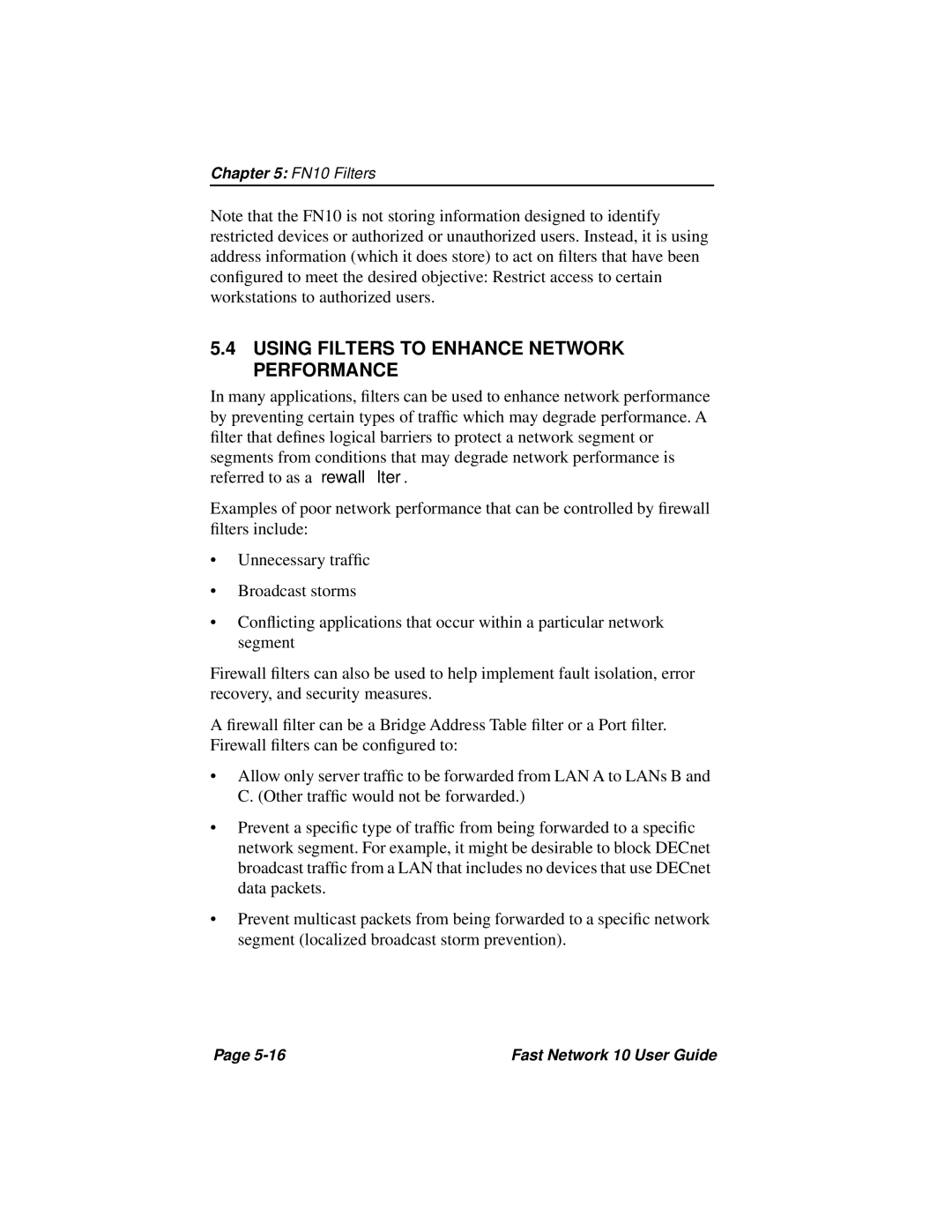Chapter 5: FN10 Filters
Note that the FN10 is not storing information designed to identify restricted devices or authorized or unauthorized users. Instead, it is using address information (which it does store) to act on filters that have been configured to meet the desired objective: Restrict access to certain workstations to authorized users.
5.4USING FILTERS TO ENHANCE NETWORK PERFORMANCE
In many applications, filters can be used to enhance network performance by preventing certain types of traffic which may degrade performance. A filter that defines logical barriers to protect a network segment or segments from conditions that may degrade network performance is referred to as a firewall filter.
Examples of poor network performance that can be controlled by firewall filters include:
•Unnecessary traffic
•Broadcast storms
•Conflicting applications that occur within a particular network segment
Firewall filters can also be used to help implement fault isolation, error recovery, and security measures.
A firewall filter can be a Bridge Address Table filter or a Port filter. Firewall filters can be configured to:
•Allow only server traffic to be forwarded from LAN A to LANs B and C. (Other traffic would not be forwarded.)
•Prevent a specific type of traffic from being forwarded to a specific network segment. For example, it might be desirable to block DECnet broadcast traffic from a LAN that includes no devices that use DECnet data packets.
•Prevent multicast packets from being forwarded to a specific network segment (localized broadcast storm prevention).
Page | Fast Network 10 User Guide |
